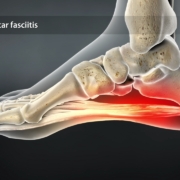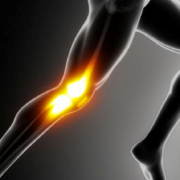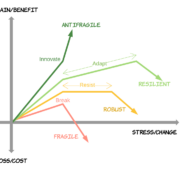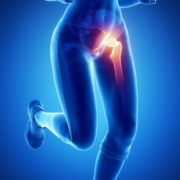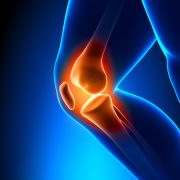Back to Balance with Laura Graham
Back to Balance with Laura Graham
This brand new one-on-one balance program now being offered through Saanich Physiotherapy at our Elk Lake location is specifically geared towards our senior clients that wish to maintain or further improve their balance.
“Across our senior population specifically, balance and falls risk are a growing concern. I’ve had many patients come into clinic with a desire to work solely on their balance in order to help maintain their independence at home, and continue to enjoy their preferred activities such as gardening and daily walks ” – Laura Graham, MScPT
When it comes to balance, a little training can make a large impact! The drawback being that balance training can be a difficult feat to complete alone, as a good balance program needs to challenge the balance itself. For this reason, Laura has started Back to Balance, which will allow clients to improve their balance in a safe and controlled one-on-one setting.
In order to register, clients will need to book an initial physiotherapy appointment with Laura Graham at Elk Lake, this appointment time will be used to complete a thorough assessment of their individual balance abilities and set treatment goals. From there, appropriate clients will be registered into the Back to Balance program, which will run Wednesday mornings at the Elk Lake location. The program will be once a week for a 5 week duration. Book an initial appointment with Laura HERE or call in to our Saanich Physiotherapy clinic for more details 250-361-5500
The Burden of Balance – Laura Graham, MScPT
Falls can be a risk at any age, it’s a situation that we try our best to always avoid, fortunately when our balance is “great” we can recover well from a small trip or stumble, and often still land on our feet with no harm done. But how does balance work, what are the various components of balance, and how does this change with age?
The body has 3 systems in place to help maintain balance, the visual system, the vestibular system and the somatosensory/proprioceptive system. Generally these 3 systems work well together to keep us upright, but at times one system will need to work harder than another system. During times of dim lighting (or with impaired vision) our visual system decreases its influence on our balance. Our vestibular system informs us of where our head is in space in relation to our body. If we have a sinus infection (or various other ailments) our vestibular system can sometimes give us faulty information regarding our balance and therefore becomes less reliable.The somatosensory system (our main system) informs us of our bodily position in space, we have to strongly utilize this system during times of any visual or vestibular impairments. At times, our vestibular, visual and somatosensory information can contradict one another (example: on a boat or plane), this can result in dizziness, nausea or a loss of balance.
Based on the previous mentioned systems, we can see why the risk of falls increase in the senior population. Visual impairments increase with age, and vestibular and somatosensory information can have delayed processing, this in combination with a loss of muscle mass or lack of balance training can result in poor balance and an increased fall risk. Due to these changes, the ability to react to a small trip or stumble may be reduced, and the resultant fall can sometimes cause a high degree of injury especially if osteoporosis is a concern. These injuries can lead to a decrease in general physical activity, a decrease in social interactions, impaired abilities of self-care, and an overall loss of confidence. Studies show that after one fall, an individual becomes much more concerned about their balance, with a substantial loss of confidence due to the fear of falling again.
Training balance can be divided into two main categories: static and dynamic. Static refers to your stationary balance, examples being standing and sitting; dynamic refers to your balance with movement, examples being walking and stairs. Static balance is often not the primary concern with the senior population; however, when we add in the component of an unstable sitting or standing surface, dim lighting (ex. eyes closed) or decreased surface area (ex. standing on one leg), then static balance becomes a much more challenging feat. Dynamic balance on the other hand can be very challenging in its purest form, hence the need for gait aids such as walkers and canes for daily walking, and railings on stairs. When we add in the component of an obstacle, such as a curb, dynamic balance suddenly becomes even more challenging.
The other component of balance training to consider is anticipatory vs non-anticipatory balance; for example, the cognitive decision to step backwards out of someone’s path (anticipatory) versus being bumped in the grocery store and needing to take a recovery step backwards (non-anticipatory). One is a predictable movement in which your body has time to prepare for the action ahead and rebalance itself into a new centre of gravity; the other being a sudden responsive movement in which your body doesn’t have time to prepare, and therefore must react quickly in order to maintain balance.
Fortunately, balance training can make a large positive impact by reducing the risk of falls, increasing daily confidence, and delaying the need of a gait aid. The drawback being that balance training can be a difficult to complete alone, as a good balance program needs to challenge the balance itself. Balance training must incorporate both static and dynamic balance, it should focus on anticipatory and non-anticipatory movements, and must challenge all 3 systems (visual, vestibular and somatosensory). With balance training, the outcome measures (the scores obtained from assessment tests) drastically improve with even a short bout of balance work (5-6 sessions), which makes the process even that much more rewarding!
If you’re an active senior looking to increase your balance and confidence, check out our Back to Balance Program!



